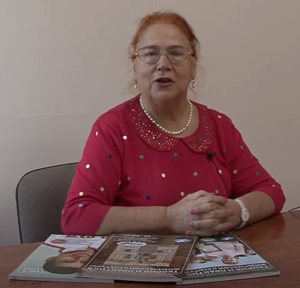Methodology for increasing the speed capabilities of runners specializing in distances of 400800 m in a student sports club
ˑ:
Dr. Hab. V.D. Kryazhev1
O.S. Vanina2
1Federal Science Center of Physical Culture and Sport (VNIIFK), Moscow
2Bauman Moscow State Technical University, Moscow
Keywords: 400-800 m running, student sports club, speed capabilities, digital technologies of urgent information.
Introduction. Specialization at distances of 400-800 m places high demands on the level of development of speed capabilities, which are measured by the indicator of maximum running speed, which affects athletic performance.
The purpose of the study is to substantiate the methodology for increasing the maximum running speed index based on the use of digital technologies for urgent information correction of sports equipment.
Methodology and organization of the study. The pedagogical experiment used: spirometry (freelap), high-speed video recording with a frequency of 240 fps, mechanical and mathematical modeling and profiling of physical fitness based on the strength-speed indicator using the mobile application for iPhone "MySprint" [1, 2]. Six student runners specializing in distances of 400-800 m at the end of the preparatory and at the beginning of the competition period for six weeks (twice a week) conducted a cycle of speed training, including in each training session a set of running exercises, running 8 times 20 m with a run of 30-40 m with an effort of 95-100% (rest 5 min) with the aim of reducing the time to overcome each subsequent segment by 0.01-0.02 seconds by varying the effort of the length and frequency of steps. At the end of the training, the athletes ran 200 m per stroke.
Research results and discussion. During the experiment (12 sessions), the maximum running speed (Vmax) increased on average from 9.53± 0.15 to 9.97±0.29 s (p≤0.05). The theoretical value of the horizontal motive force, calculated on the basis of the force-velocity profile, has practically not changed and remains in the range of 8.7-9.8 N/kg. At the same time, the slope of the power-speed line decreased from -0.97±0.06 to -0.83± 0.05 N/kg/s/m, which indicates an increase in the efficiency coefficient of running techniques, determined by the ratio of horizontal to vertical effort. This ensured an increase in the theoretical maximum running speed from 9.86±0.22 to 10.30± 0.31 m/s (p≤0.05). The result in the 200 m c stroke control race improved from 23.68±0.39 to 23.23±0.30 s (p≤0.05). The sports result at the 400 m distance increased from 52.75±0.61 to 52.05±0.56 (p≤0.05).
Conclusion. One of the effective methods of increasing the speed capabilities of students specializing in distances of 400-800 m is the use of digital technologies for urgent information about running speed and the "strength–speed" profile, which leads to an improvement in the Vmax index by increasing the efficiency of running movements.
Literature
- Kryazhev, V.D., Maryina, N.V., Kashenkov, Y.B., & Razzhavin, O.A. (2021). Methodology of research on the kinematics and kinetics of the starting sprint run of sprinter students. Scientific Notes of P.F. Lesgaft University, 9(199), 152-158.
- Morin J.-B., Samizino P., Murata M., Cross M., Nagahara R. A simple method for computing sprint acceleration kinetics from running velocity data: Replication study with improved design. Journal of Biomechanics. 2019. Vol. 20. No. 94. р. 82–87.



